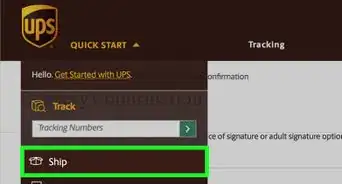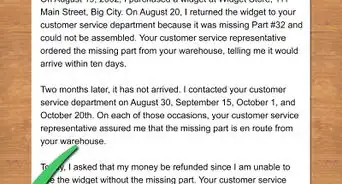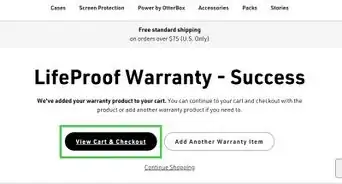This article was co-authored by Clinton M. Sandvick, JD, PhD. Clinton M. Sandvick worked as a civil litigator in California for over 7 years. He received his JD from the University of Wisconsin-Madison in 1998 and his PhD in American History from the University of Oregon in 2013.
There are 12 references cited in this article, which can be found at the bottom of the page.
This article has been viewed 25,988 times.
“Lemon law” is a colloquial term for state laws that govern new vehicles that need repeated repairs. Despite the repeated repair work, if a car still does not function properly, you may declare it to be a “lemon” and then take steps to replace it or collect a refund. You need to proceed in accordance with state law in order to protect your rights. You may be able to resolve the problem directly with the dealer. If not, you can then take further legal action to enforce your rights.
Steps
Reporting First to the Dealer
-
1Contact your dealer regarding your repair problems. The first report of a problematic car under the lemon law in most states must be to the dealer where you purchased the car. Whether the dealer has provided the service to your car, or you have gone to another service station, you must report the problem to the dealer. The dealer, by law, must have an opportunity to correct the problems that you are having.[1]
- Visit the site, www.carlemon.com, to access a summary of each state's lemon laws. You can search for your own state and find the laws that apply to you.[2]
-
2Give the dealer a “reasonable” time to resolve the problem. After you report the problem to the dealer who sold you the car, you must allow a “reasonable” opportunity for the dealer to correct whatever is wrong with the vehicle. Most states provide two possible definitions for what is “reasonable”:[3]
- at least two, or up to four, attempts to repair the vehicle, OR
- such repairs that take the car out of usable service for 30 days.
Advertisement -
3Give notice that you consider the vehicle to be a “lemon.” Before you are allowed to take any additional legal action, you must give the dealer written notice that the car is a lemon. Put your notice in writing and send it by certified mail. You should send your notice to the local dealer’s location and also to the corporate national headquarters. The local dealer is the one that will address the issue, but writing to the corporate headquarters puts the company officially on notice.[4] [5]
- In your letter, you should begin by clearly stating that you believe your car falls under the lemon law of your state. For example, your letter may begin, “Dear Sir or Madam, I am writing to notify you that the car I recently purchased from your dealership falls under the state lemon law because of the need for repetitive repairs.”
- Identify the car clearly by providing the make, model, and year of the car, as well as its vehicle identification number (VIN). The VIN will be necessary to provide a specific identification of your particular car.
- Explain the mechanical problem that you have been experiencing. Try to be as detailed as possible, with information about the impact the car problems have had on you and the way that the car does not work.
- Provide a list of the dates when you had the car repaired. You should include the name and location of the service station that provided the work each time, a description of the problem that you had worked on, and your description of the result. Include the length of time that the car was out of service for each repair.
-
4Work with the dealer to resolve the issue. If the dealer agrees with your lemon law claim, and agrees that “reasonable” repair efforts have failed to correct the problem, the dealer is expected then to offer you either a replacement vehicle or a refund. In most states, it is your option to accept the replacement vehicle or the refund.[6] [7]
- An offer of a replacement vehicle should include reimbursement for any additional costs that you incur related to taking a new car. This should include additional registration fees or transfer fees, any towing or rental costs you incurred, and any sales tax related to the replacement vehicle.
- If you opt to accept a refund instead, your state law will direct the amount that you should be able to receive. You should be compensated for the full purchase price, including all costs related to the purchase, such as taxes and registration. The dealer may be entitled to reduce the refund by a percentage to account for the time or mileage on the car at the time of the refund. The reduction will be calculated according to your own state’s law.
Taking Part in Arbitration
-
1Define the disagreement with the dealer. You will need to take further action if the dealer will not offer you either a refund or a replacement vehicle. The dealer may not accept your conclusion that the car is a lemon. This disagreement may be based on any one or more of the following details:
- The dealer may argue that you let too much time go by before filing your claim.
- The dealer may assert that you are exaggerating the problem. The dealer could hold the opinion that the repairs have fixed the vehicle satisfactorily.
- You and the dealer may disagree on whether the offered replacement vehicle is acceptably similar to yours.
- You and the dealer may disagree on calculating an acceptable refund amount.
-
2Determine if you are eligible for arbitration. In a large number of states, lemon laws offer a state-certified arbitration program to help resolve disputes. In those states, arbitration might be considered either mandatory or optional. In states that offer arbitration, you must meet certain eligibility requirements in order to take part. For example, in California, your vehicle must meet the following requirements if you want to take part in state-certified arbitration:[8]
- Purchased or leased in California from a retailer
- Covered by the original warranty
- Purchased for personal use
-
3Prepare for the arbitration process. If eligible, you should gather important documents and get your ducks in a row before filing. Start by collecting all of your repair orders, taking notes regarding conversations with your dealership, and by keeping a log book of all repair attempts (including dates).[9] This information will help you file your arbitration claim and be successful during your arbitration hearing.
-
4File an arbitration claim. To file for arbitration, check your warranty materials. In a state like California, the manufacturer is required to supply you with detailed steps for filing within those materials if the manufacturer is a part of the state-certified arbitration program. If you do not find the information you need in your warranty materials, visit your state's lemon law website. There is usually no filing fee associated with these arbitration claims. Also, there is generally no need to hire a lawyer, unless you want one. When you file an arbitration claim, you will provide the following information:[10]
- A statement of the problem and how you would like it resolved
- A date and signature
-
5Go to your hearing. If possible, attend your hearing in person. However, if you are unable to attend, you can usually make your case over the phone or in writing. During the hearing the arbitrator will ask each party to present evidence about their case. You should be prepared to summarize repair attempts, give the arbitrator copies of all your documentation, and have your vehicle on hand so it can be inspected.
- Towards the end of your presentation, tell the arbitrator how you would like the matter resolved. In general, you will be able to ask for additional repairs, a replacement vehicle, a refund, and reimbursements.[11]
-
6Accept or reject the arbitrator's decision. After both parties have presented their case, the arbitrator will make a decision about how your case should be resolved. In California, this decision must be made within 40 days of you filing your arbitration claim. The decision the arbitrator makes is binding on the manufacturer, but only if you choose to accept it. If you reject the decision, you will be able to move forward and seek other remedies.
- If you accept the arbitrator's decision, the manufacturer will have to perform under the decision within a certain period of time. In California, the manufacturer will have to perform under the decision within 30 days of being made aware of it.[12]
Bringing an Action in Court
-
1Consider suing the manufacturer and dealer in court. If arbitration does not lead to a final solution, you can file a complaint in court. For example, in Maryland, you can file a lemon lawsuit in court regardless of whether you first arbitrated your case.[13] In California, you can only use the "Lemon Law Presumption" if you first arbitrate your claim. This is meant to incentivize arbitration and dispute resolution.[14]
- Each state has a lemon law and each state has its own requirements for filing a lawsuit.
-
2Talk to an attorney about taking legal action. An attorney can work with you to review your claim, the details of the repair efforts, and the strength of your lemon law allegations. In the beginning, as you work with the dealer to try to resolve the repairs that are needed, you may not feel that an attorney is necessary. However, if you choose to proceed with more involved legal processes, an attorney will probably be very helpful. In some states, an attorney may even be required.[15]
-
3File your complaint. If you are eligible to file a lawsuit, you and your attorney will need to file a complaint in the correct court. Most often, this will be in the county and state where your vehicle was purchased or where you are licensed to drive. The complaint is a formal legal document that states your claims (i.e., that your car is a lemon) and specifies the remedy you are seeking.[16] In general, in lemon law cases, you can ask for additional repair attempts, a replacement vehicle, a refund, and reimbursement for expenses.[17]
- If you do file a lawsuit, you should name both the local dealer and the corporate manufacturer as defendants in your lawsuit.[18]
- If your state requires you to arbitrate before filing a lawsuit, make sure you provide the details of the arbitration in your complaint. If you fail to do so, the court may dismiss your case.
-
4Serve the defendant. After you file your lawsuit, the clerk of courts will sign and stamp a summons form. This form, along with a copy of your complaint, must be sent to the defendant. This process, called service, helps notify the defendant of the pending action against them. In most cases, you will not be able to serve the defendant personally. Instead, you will need to hire someone over the age of 18 who is unrelated to the case. You can also hire your local sheriff's office to serve the defendant on your behalf.[19]
-
5Analyze the defendant's response. Once the defendant has received a copy of your complaint, they will respond by filing an answer. An answer is a legal document that replies to each of your allegations. In addition, the answer might contain various defenses the defendant finds relevant. Once filed, this answer will be served on you. Read the answer carefully because it will help you determine how to proceed.
-
6Take part in discovery. During discovery, you and the defendant will exchange information in order to prepare for trial. You will be able to collect facts, interview witnesses, see what the other side is going to say at trial, and determine how strong your case is. To accomplish these things, you will be able to use the following tools:[20]
- Depositions, which are formal, in-person interviews with witnesses and and parties. The interviews are conducted under oath and answers given can be used in court.
- Interrogatories, which are written questions posed to witnesses and parties. The responses will be written under oath and can be used in court.
- Requests for documents, which are written requests for information you would not normally be able to get your hands on. For example, in a lemon lawsuit, you might ask for warranty information, internal memos, phone records, and repair records.
- Requests for admissions, which are written statements the defendant must admit or deny. These requests help hone in on what is really at issue in the case.
-
7Oppose any motion for summary judgment. When discovery concludes, the defendant will most likely try to end the litigation immediately and have the judge rule in their favor. To do this, they will file a motion for summary judgment. In order to succeed, the defendant will have to prove that there are no genuine issues of material fact and that they are entitled to judgment as a matter of law. In other words, the defendant will have to persuade the judge that, even if all factual assumptions were made in your favor, you would still lose.
- To defend against the motion, you will need to file a response. It will contain evidence and affidavits showing that factual disputes do exist and that they need to be hashed out in court. You will be successful so long as you can persuade the judge that you have a chance (no matter how small) to win at trial.[21]
-
8Attempt to settle. Trials can be incredibly expensive and time consuming. To avoid the burden of trial, you should attempt to settle if you get this far into the litigation. This is a great time to settle because both parties will have evidence gathered during discovery, which will help during the negotiations. In addition, you will most likely know how the judge is feeling about the case based on how they handled summary judgment. Start by taking part in informal negotiations with the defendant. If they do not lead to a resolution, try mediation.
- During mediation, a neutral third party will sit down with both parties and discuss the case. The mediator will try to come up with unique solutions that can make both parties happy. The mediator will not inject their own opinions and they will not take sides.
-
9Go to trial. If you end up going to trial, you will have to present your case to a judge, and perhaps a jury. As the plaintiff, you will present your case first. Your attorney will examine witnesses and present physical evidence to the court. When your attorney is done, the defendant will have an opportunity to present their case. At the end of the trial, the judge and/or jury will deliberate and come up with a resolution. The resolution will then be announced in court. If you win, you will be awarded one or more remedies asked for in your complaint.
- If you lose, you will not be awarded any remedy. However, if you feel as if the judge made some legal error that affected the outcome of the case, you may be able to appeal the decision to a higher court. If you think this is a possibility, talk to your attorney as soon as possible. In most cases, your attorney must file a notice of appeal within about 30 days of judgment being entered against you.[22]
Filing Additional Reports About Your “Lemon”
-
1Report the issue to the Attorney General. Whether or not you take action in court, you can at least report your problem to the Attorney General. Most states’ Attorney General’s offices will provide a website or a telephone contact to take formal complaints. A complaint to the Attorney General is not likely to result in a financial recovery for you, but it will initiate an investigation into the dealer.[23]
- To find the site that you need, search for “Attorney General consumer complaint” and the name of your state. This should lead you directly to a site with the forms and additional information to help you file your complaint.
-
2Report the company to the Better Business Bureau. The Better Business Bureau (BBB) provides notices and support to consumers when they get involved with disputes with various businesses. The BBB has an online complaint form that you may use if your dispute was not resolved to your satisfaction.[24]
- The Better Business Bureau will receive your complaint and share it with the manufacturer for a response. If the manufacturer provides no response, the BBB will make a second attempt. The BBB will share with you any response they receive, or notice that they received nothing. In any event, your complaint will go on record and may help future consumers.
-
3Notify the Office of Consumer Affairs in your state. The Office of Consumer Affairs is an agency that records complaints and concerns with businesses. In many states, this is a department within either the Attorney General or Secretary of State’s office. The Office of Consumer Affairs may not take an active part in your dispute. However, they do keep records and can take action if a number of complaints are received against a single business.
- You can use the site www.usa.gov/state-consumer to find information about Consumer Affairs in any state in the U.S. You can select your state from a drop-down list, and the search engine will provide you with several access numbers and contacts within your state.
Warnings
- The information in this article is a compilation of the laws of many different states nationwide and is only meant for general information. There is no single lemon law in the United States. You will need to investigate the laws of your own state for the details that apply to you.⧼thumbs_response⧽
References
- ↑ http://www.dmv.org/automotive-law/lemon-law.php
- ↑ https://www.carlemon.com/
- ↑ http://www.dmv.org/automotive-law/lemon-law.php
- ↑ http://www.dmv.org/automotive-law/lemon-law.php
- ↑ http://www.mass.gov/ocabr/consumer-rights-and-resources/autos/lemon-laws/new-leased-lemon-law.html
- ↑ http://www.dmv.org/automotive-law/lemon-law.php
- ↑ http://www.mass.gov/ocabr/consumer-rights-and-resources/autos/lemon-laws/new-leased-lemon-law.html
- ↑ http://www.dca.ca.gov/acp/pdf_files/englemn.pdf
- ↑ http://www.dca.ca.gov/acp/pdf_files/englemn.pdf
- ↑ http://www.dca.ca.gov/acp/pdf_files/englemn.pdf
- ↑ http://www.dca.ca.gov/acp/pdf_files/englemn.pdf
- ↑ http://www.dca.ca.gov/acp/pdf_files/englemn.pdf
- ↑ http://www.marylandattorneygeneral.gov/Pages/CPD/lemon.aspx
- ↑ http://www.dca.ca.gov/acp/pdf_files/englemn.pdf
- ↑ https://www.carlemon.com/
- ↑ https://www.law.cornell.edu/wex/complaint
- ↑ http://www.dca.ca.gov/acp/pdf_files/englemn.pdf
- ↑ https://www.carlemon.com/
- ↑ http://www.courts.ca.gov/selfhelp-serving.htm
- ↑ http://www.courts.ca.gov/1093.htm
- ↑ https://www.law.cornell.edu/wex/summary_judgment
- ↑ http://www.wawd.uscourts.gov/sites/wawd/files/ProSeManual4_8_2013wforms.pdf
- ↑ http://www.illinoisattorneygeneral.gov/consumers/filecomplaint.html
- ↑ [https://www.bbb.org/consumer-complaints/file-a-complaint/get-started












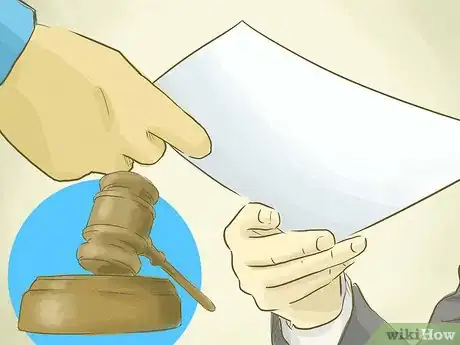







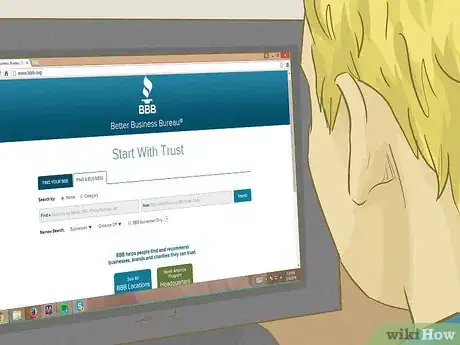
-Step-1.webp)

